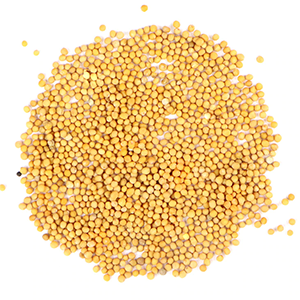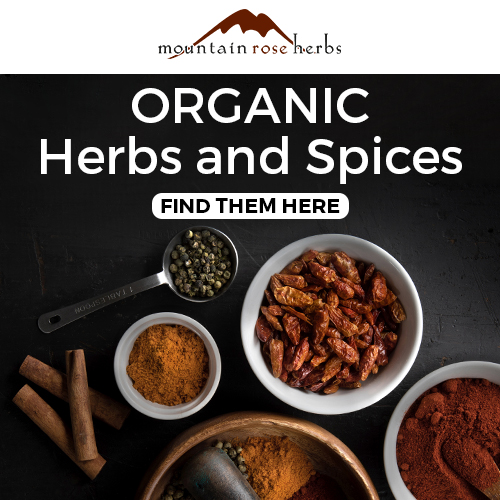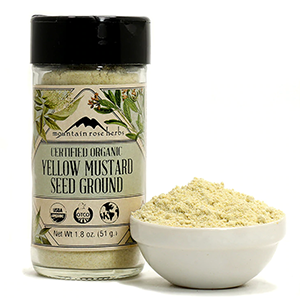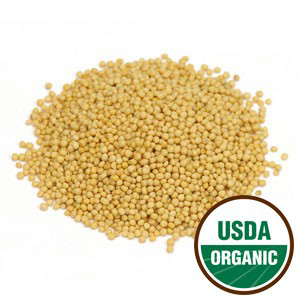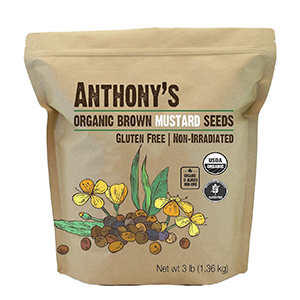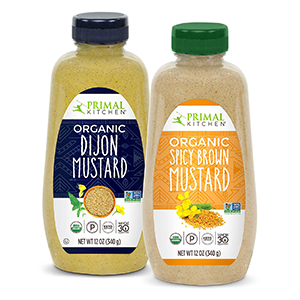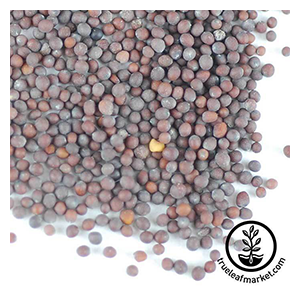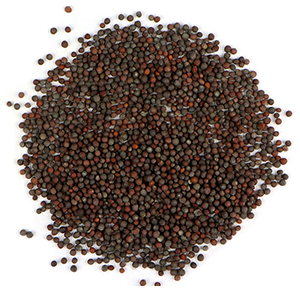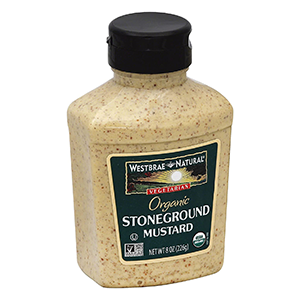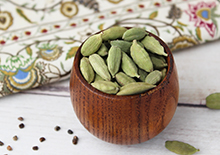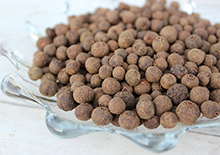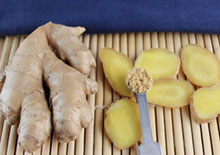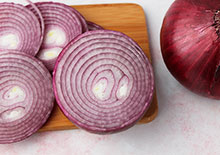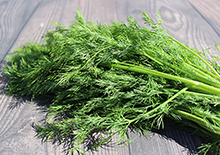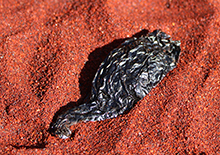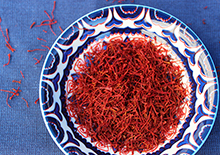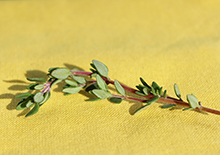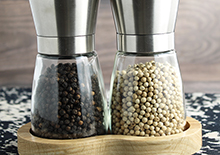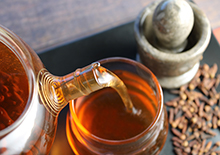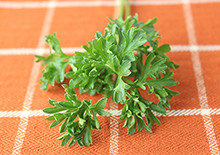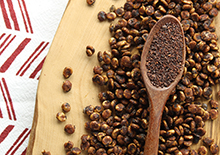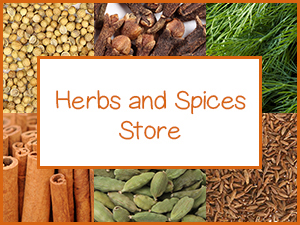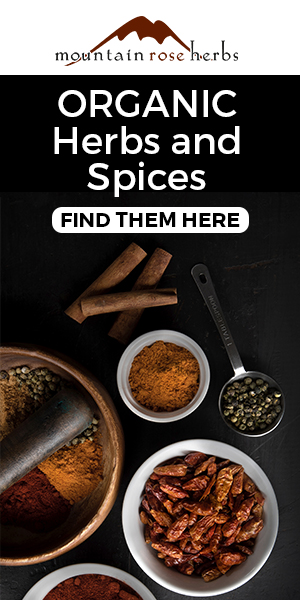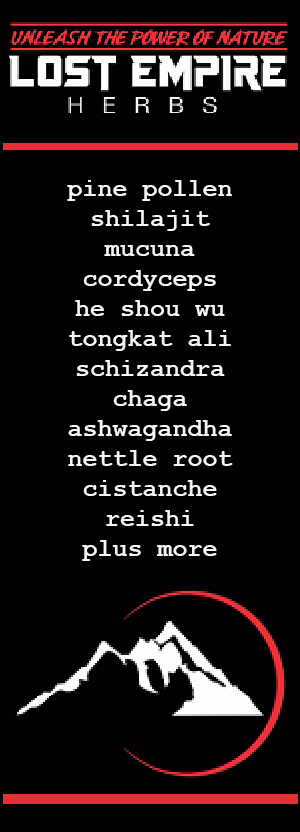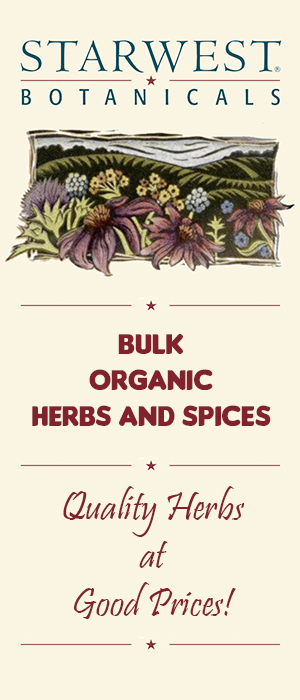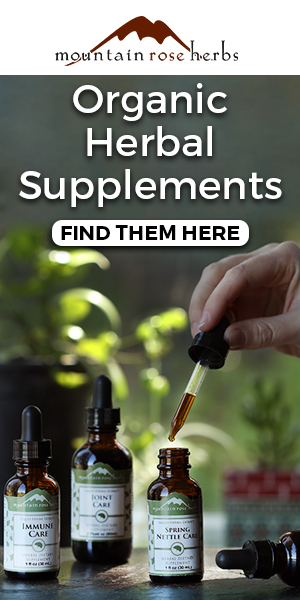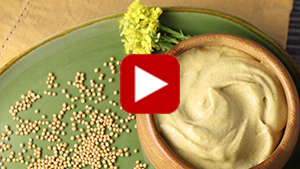- Home
- Herbs and Spices
- Mustard Seed
Mustard Seed and Prepared Mustard, 6 Facts and Benefits
Mustard Seed Vs Prepared | Cruciferous Compounds | Isothiocyanate Benefits | Digestive Spice | How to Make Mustard | About Wild Mustard | Precautions | Shop
1) Mustard Seed Vs. Prepared Mustard
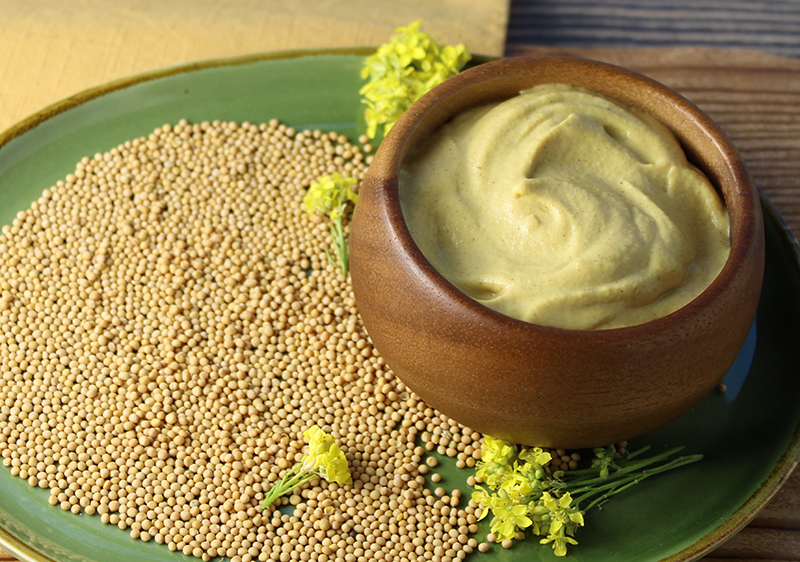
When using the term "mustard", frequently the smooth yellow paste-like condiment comes to mind. "Mustard" however can also refer to the seeds that it is made from.
Mustard seed is a type of spice, used whole or as a ground powder. The three types of seeds identified by their color are yellow, brown and black. Yellow mustard seed, sometimes called white mustard, is the one most popular for use as a type of culinary seasoning. Interestingly, however, all mustard seed is yellow on the inside, despite the exterior pigmentation.
Table of Contents
Mustard Seed Vs Prepared | Cruciferous Compounds | Isothiocyanate Benefits | Digestive Spice | How to Make Mustard | About Wild Mustard | Precautions | Shop
When mustard seeds are soaked in liquid, they become slightly mucilaginous and the
perfect consistency for making what is commonly called "prepared"
mustard.
This process involves grinding seeds and mixing them with water, vinegar, salt and often turmeric, which can give it a bright yellow color.
There are many different
types of mustard with yellow mustard and Dijon being two of the most
popular American favorites. Traditional yellow mustard is made from yellow mustard
seeds whereas Dijon mustard often incorporates spicier brown seeds or a combo of yellow and brown, in addition
to white wine or wine vinegar.

Other cultural variations of prepared mustard can range in spiciness and texture depending on the seeds and grinding methods utilized.
(See our section below on how to make Homemade Mustard)
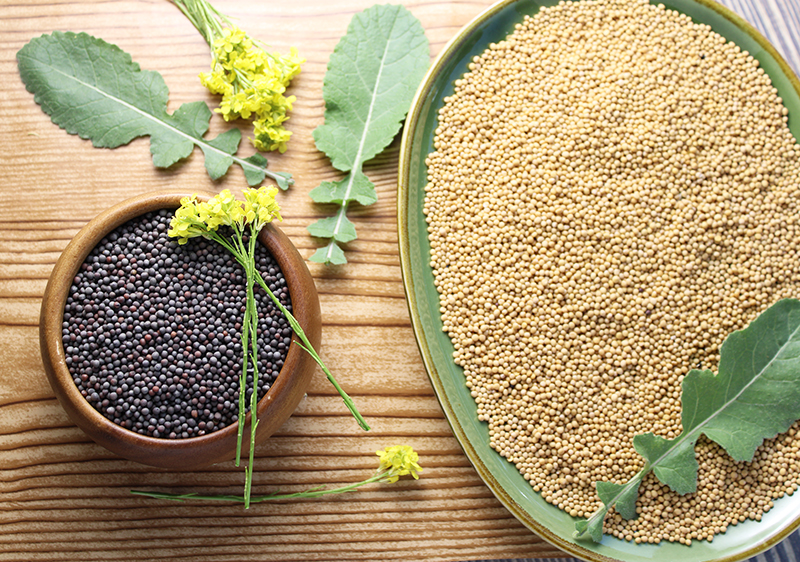
2) Mustard's Cruciferous Compounds and Flavor
The mustard seed plant is a type of cruciferous species related to kale, broccoli, cabbage, radish, watercress and horseradish.
These plants are identified by their similar blossoms with four yellow petals that form a cross, hence the name "crucifer". Mustard seeds come from the long seed pods that form after the flowering stage.
The seeds are very high in cruciferous substances known as glucosinolates, especially sinigrin and sinalbin. When the seeds are broken or ground and mixed with water, the myrosinase enzyme acts on these glucosinolates and produces various ISOTHIOCYANATES, the substances that give mustard its health benefits.
The main two are allyl isothiocyanate and 4-hydroxybenzyl isothiocyanate. These isothiocyanates are generically known as "mustard oil" and are found to a smaller degree in all members of the cruciferous plant family.
Allyl isothiocyanate is primarily responsible for the hot pungent flavor of mustard and is also high in other species like garlic, horseradish and wasabi.
The different types of mustard seed, yellow (Brassica alba), brown (Brassica juncea) and black (Brassica nigra), can vary in heat intensity and taste sensations depending on the unique ratio and concentration of isothiocyanates. Brown and black mustard seeds are generally hotter than yellow.
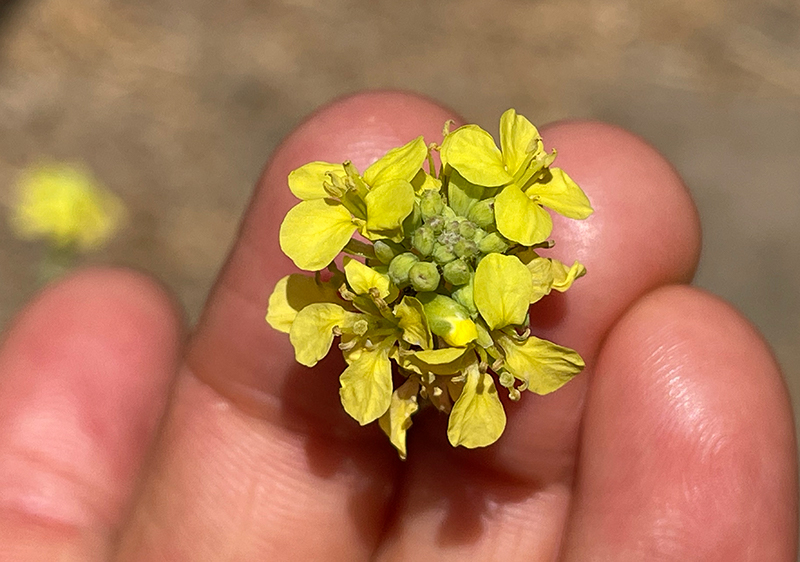
3) Mustard Seed and Isothiocyanate Health Benefits
The glucosinolate-derived isothiocyanates in ground mustard seed, as well as quality prepared mustard, are sulfur-bearing compounds known for both their antioxidant, antimicrobial and anti-inflammatory influence. (*)
The organosulfur compounds are likewise identified
to support the body's detoxification processes and are often claimed to help detoxify food toxins created for example when grilling
proteins. Prepared mustard thus makes a great spice rub when smoking or barbecuing.
In herbal folk traditions, mustard seed has been used as an expectorant for clearing congestion as well as a general analgesic for aches and pains when used in hot baths. The seed's antimicrobial properties are known to work well in herbal foot soaks.
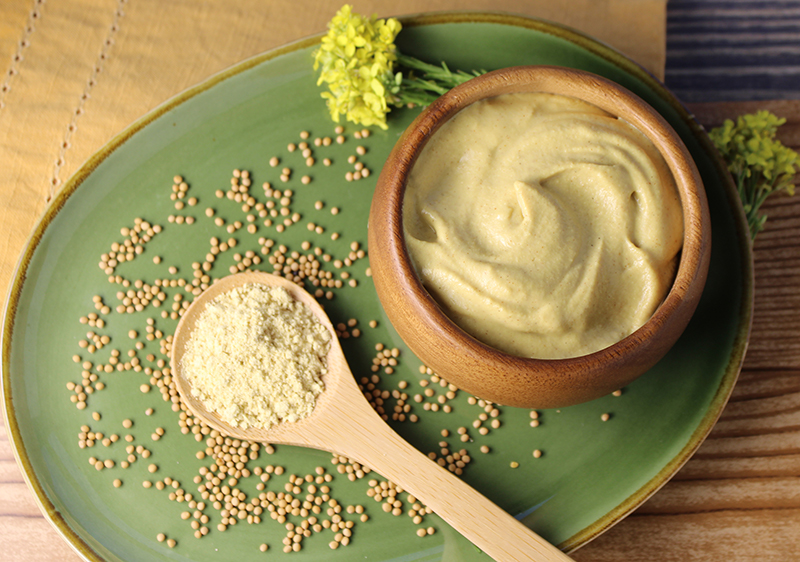
4) Mustard Seed as a Digestive Spice
Their oily, hot and mucilaginous qualities make mustard seed and prepared mustard ideal for activating digestive fire in Vata and Kapha body types. Brown mustard seed is a number one ingredient in Ayurvedic kitchari spice blends used for these same purposes.
Mustard seed is often toasted with other seed spices like cumin, fenugreek and coriander for use in curries, dals and numerous east Indian foods.
It is also commonly found in pickling spice blends when making pickles or culturing vegetables.
5) How to Make A Homemade Mustard Recipe
It is super easy to make homemade mustard using one type of whole mustard seed or a combination. This recipe will make a little under one cup of prepared mustard.
Our Homemade Mustard Recipe:
- 1/2C of whole mustard seeds (half black mustard seed and half yellow)
- 1/2C pure water
- 3T apple cider vinegar
- 1/2t turmeric
- 1/2t pink salt
Directions: Grind up the whole seeds in a high speed blender until a coarse to fine powder. Add other ingredients and mix with water. Let sit on the counter overnight to allow the flavor to mellow and texture to thicken.
You can use it straight as is or press it through a sieve to create a smoother texture. Store in the fridge in a sealed jar. It will last for several months or more.
6) About Wild Mustard
Anyone living in many parts of California is often well acquainted with wild mustard. As an invasive species, in the springtime, it can literally cover fields, cliffs, and coastal hillsides with a bright golden-yellow color.
Father Junípero Serra is said to have introduced black mustard seed to California from Europe by scattering the seeds to mark routes from one Spanish monastery to the next.
It is an annual plant usually growing about 1-3 feet (30-91 cm) tall with seeds, yellow flowers and leaves that are all edible. The seeds can be harvested later in the season to make a spicy ground mustard.
The leaves are best eaten raw when young before the flowering stage. After this point, they tend to develop a coarser hairy texture that is better when steamed as a green leafy vegetable. There are many types of wild mustard, as well as look-a-likes, so it’s best to bring an edible plant guide to ensure you have the correct species.
Precautions:
Raw mustard seed may induce goitrogenic effects. For some individuals, mustard can induce nausea and cause allergies. Consult your healthcare professional before using mustard seed spice or condiment if you are pregnant, nursing, have a serious health condition or are taking any medications.
Shop Related Products (About Affiliates & Amazon Associate Paid Links)
Affiliate Disclaimer: This section contains affiliate product links. If you make a purchase through our recommended links, we receive a small commission at no additional cost to you. Thanks for the support.

